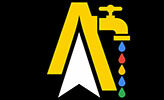GoogleApi.ContentWarehouse.V1.Model.GeostoreIntersectionProto
Table of Contents ▼
Jump to a specific part of the page:
Description
A TYPE_INTERSECTION feature represents a common endpoint of one or more segments in a transportation network at which the segments are connected. An intersection in the real world may be more complicated than that (e.g., comprise multiple segment endpoints or have extra attributes), which can be modeled with an additional TYPE_INTERSECTION_GROUP feature, if needed (see intersectiongroup.proto). The standard feature properties are interpreted as follows: name - This should always be empty. Intersections that have a "special" name (e.g. Reads Corner intersection, PEI, Canada) should point to a separate TYPE_INTERSECTION_GROUP feature that captures it. Intersections which are named according to their cross streets do not need this requirement, since their name can be determined by looking at the routes associated with each segment. address - This should always be empty. point - Specifies the center of the intersection. This should be the last vertex of all the segments which terminate at this intersection. polyline - This should always be empty. polygon - This should always be empty. child - This should always be empty.
Attributes List
This module has the following attributes (case-insensitive ascending order):
Attributes
-
intersectionGroup(type:GoogleApi.ContentWarehouse.V1.Model.GeostoreFeatureIdProto, default:nil)
- The artifact or logical intersection group to which this intersection belongs. If present, the intersection group must also refer back to the intersection. If an intersection is within both the artifact and logical group, then this reference should be to the artifact group. -
outSegment(type:list(GoogleApi.ContentWarehouse.V1.Model.GeostoreFeatureIdProto), default:nil)
- RESERVED -
segment(type:list(GoogleApi.ContentWarehouse.V1.Model.GeostoreFeatureIdProto), default:nil)
- The list of segments that terminate at this intersection, in any order. Note that all segments are directed towards the intersection, i.e. their endpoints indicate what sort of intersection this is. This should not be empty because an intersection with no associated segment is meaningless. -
tollCluster(type:GoogleApi.ContentWarehouse.V1.Model.GeostoreFeatureIdProto, default:nil)
- The toll cluster to which this intersection belongs. If present, the toll cluster must also refer back to the intersection. To set this field, the intersection must be a gcid:toll_intersection feature.
Type
intersectionGroup: GoogleApi.ContentWarehouse.V1.Model.GeostoreFeatureIdProto.t() | nil,
outSegment: [GoogleApi.ContentWarehouse.V1.Model.GeostoreFeatureIdProto.t()] | nil,
segment: [GoogleApi.ContentWarehouse.V1.Model.GeostoreFeatureIdProto.t()] | nil,
tollCluster: GoogleApi.ContentWarehouse.V1.Model.GeostoreFeatureIdProto.t() | nil
}
Function
@spec decode(struct(), keyword()) :: struct()Data sourced from HexDocs : GoogleApi.ContentWarehouse.V1.Model.GeostoreIntersectionProto
